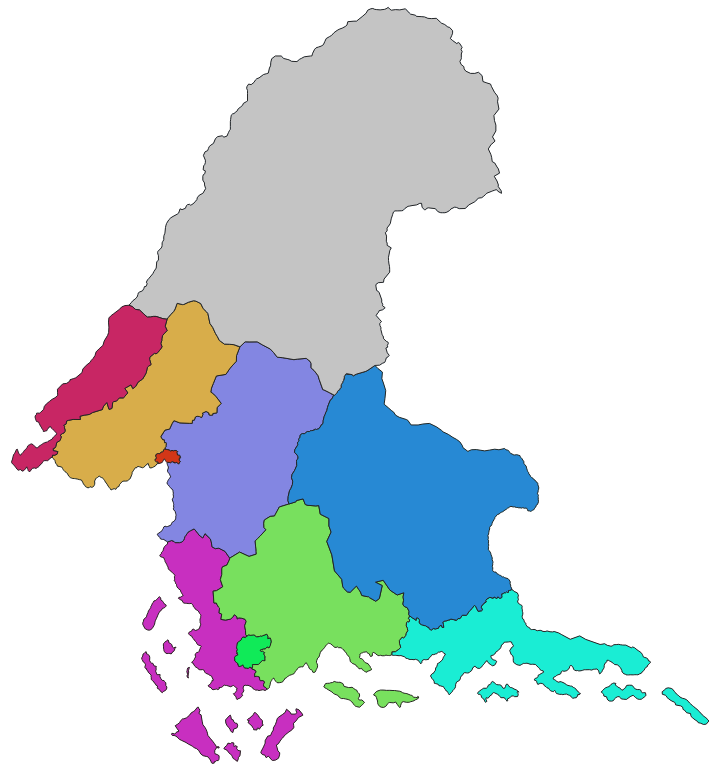Federal Constitution of Sanama
From MicrasWiki
Jump to navigationJump to search
The Federal Constitution of Sanama was adopted by the people of Sanama in a referendum on 24.VI.1679. It was superseded by the new constitution on 1.I.1687.
Outline
- Due to the failure of the previous federal system to prevent government lethargy, equality and its final overthrow, the new state will federate at a higher level. Instead of 69 sovereign cantons, this constitution will form seven to nine provinces with limited sovereignty, and one to three territories. Highpass will initially become a territory, with the goal of becoming a province in the future. A federal capital territory may also be formed, as well as insular territories, if necessary. The admittance of new provinces to the union requires the consent of at least two-thirds of existing provinces.
- All official languages on the provincial level are also official languages on the federal level.
- The legislature consists of two houses: the Federation Council with representatives of the provinces and territories, and the National Assembly, with representatives of the people elected per province and territory. The Federation Council will be partly elected by the people, partly appointed by the government of the province or territory. The houses are equal in legislative power, but the Federation Council has additional powers in relation to foreign affairs and the rights of the provinces. Its term of office will be five years.
- The executive power will be vested in a President and a Council of Ministers. The Council of Ministers will be headed by a Chancellor. The Chancellor is appointed by the President with the consent of the National Assembly. The Chancellor is responsible for the conduct of the government to both the President and the National Assembly. The National Assembly may dismiss the Chancellor, and thereby the entire Council of Ministers, through a vote of no-confidence. The President may dismiss the Chancellor, but only for good cause, for example an inability to govern or loss of confidence. The term of office of the President will be five years.
- All acts of the Council of Ministers must be signed by the President. The President may refuse signature. Any such refusal may be submitted for approval by the Chancellor to the National Assembly. If the National Assembly approves, the President must sign the act. All acts of the President must be counter-signed by the Chancellor. The Chancellor may refuse signature on account of unconstitutionality.
- All acts of the legislature must be signed by the President. The President may veto a law presented to him, but only once per law. He shall return the law to the chamber of origin with a statement explaining his reasons for veto. If the legislature in a joint sitting passes the law again with the support of at least three-fifths of the entire membership, the President is obliged to sign the law.
- The President is head of state and commander-in-chief. The Chancellor is head of government. All actions of the President as commander-in-chief must be counter-signed by the Chancellor.
- The Supreme Court is separate from the legislative and executive branches of government. It is appointed by the President with the consent of the Federation Council. It may review any law or public action and declare it null and void if it violates the constitution.
- Draft of provincial borders (Highpass territory marked in grey):
| |||||||||||||||||||||||

